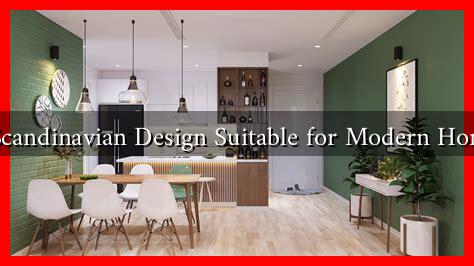-
Table of Contents
Is Scandinavian Design Suitable for Modern Homes?
Scandinavian design has gained immense popularity over the years, characterized by its minimalism, functionality, and connection to nature. As modern homes evolve to embrace simplicity and sustainability, the question arises: Is Scandinavian design suitable for modern homes? This article explores the principles of Scandinavian design, its compatibility with contemporary living, and how it can enhance modern homes.
Understanding Scandinavian Design
Originating from the Nordic countries—Denmark, Sweden, Norway, Finland, and Iceland—Scandinavian design emerged in the early 20th century. It emphasizes clean lines, natural materials, and a harmonious blend of form and function. Key characteristics include:
- Minimalism: A focus on simplicity and decluttering.
- Functionality: Every piece of furniture serves a purpose.
- Natural Materials: Use of wood, leather, and textiles that reflect the natural environment.
- Light Colors: A palette dominated by whites, grays, and soft pastels to create a sense of space.
- Connection to Nature: Incorporating elements that bring the outdoors inside.
The Appeal of Scandinavian Design in Modern Homes
Modern homes often prioritize open spaces, multifunctional areas, and a seamless flow between indoor and outdoor environments. Scandinavian design aligns perfectly with these trends for several reasons:
1. Space Optimization
In urban settings where space is often limited, Scandinavian design excels in maximizing functionality without compromising aesthetics. Furniture pieces are designed to be compact yet versatile, making them ideal for small apartments or homes. For instance, a Scandinavian-style sofa bed can serve as both a seating area and a guest bed, catering to the needs of modern living.
2. Sustainability
As sustainability becomes a priority for homeowners, Scandinavian design’s emphasis on natural materials and eco-friendly practices resonates well. Many Scandinavian brands, such as IKEA and Muuto, focus on sustainable sourcing and production methods. According to a report by the Ellen MacArthur Foundation, the circular economy in furniture design can significantly reduce waste, making Scandinavian design a responsible choice for modern homes.
3. Timeless Aesthetics
Scandinavian design is known for its timeless appeal. The clean lines and neutral color palettes ensure that these designs remain relevant regardless of changing trends. This longevity means that homeowners can invest in Scandinavian pieces without the fear of them going out of style. For example, the iconic Egg Chair by Arne Jacobsen continues to be a sought-after piece decades after its creation.
Case Studies: Successful Integrations of Scandinavian Design
Several modern homes have successfully integrated Scandinavian design principles, showcasing its versatility and appeal:
- The H House in Sweden: This modern home features large windows that invite natural light, complemented by minimalist furniture and a neutral color palette, creating a serene living space.
- The K House in Norway: A perfect example of blending indoor and outdoor spaces, this home uses natural materials and open layouts, embodying the essence of Scandinavian design.
Challenges and Considerations
While Scandinavian design offers numerous benefits, there are challenges to consider:
- Cold Climate Adaptation: Some elements may not be suitable for warmer climates without modifications.
- Personalization: The minimalist approach can sometimes feel impersonal; homeowners may need to add personal touches to make the space feel warm and inviting.
Conclusion
In conclusion, Scandinavian design is not only suitable for modern homes but also enhances their functionality, sustainability, and aesthetic appeal. Its principles of minimalism, natural materials, and timelessness align perfectly with contemporary living trends. As homeowners seek to create spaces that are both beautiful and practical, embracing Scandinavian design can lead to a harmonious and inviting environment. For those interested in exploring more about Scandinavian design, resources like Scandinavian Design provide valuable insights and inspiration.


